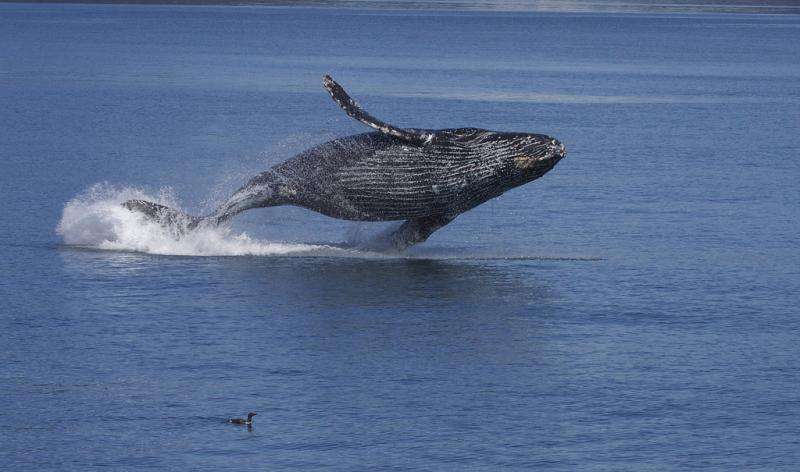Migrating humpbacks face double blow from human activity

Humpback whales (Megaptera novaeangliae) on their annual migration along WA's coast are facing pressure from both reduced food availability because of climate change and being disturbed by mining and boats, according to two studies.
In the first study, researchers used historical whaling data from Albany, Carnarvon and Point Cloates to examine the body condition of humpback's caught in WA waters from 1947-1963.
They used oil yields as a proxy for whale body condition and found the whale's fat content, or energy reserves, was highest when there was a lot of krill available.
This in turn was associated with high sea ice cover in Antarctica the previous winter.
Whale researcher Janelle Braithwaite, who conducted the study as part of her PhD at UWA, says the research is important in trying to assess climate change impact in the Southern Ocean in the future.
"If there's less sea ice then there's going to be less food for whales," she says.
"If there's less food for whales, then our results indicate that the whales aren't going to be as fat and this is going to cause problems when it comes to trying to complete migration on their limited energy reserves as well as also reproducing."
Optimal whale speeds investigated
A second study led by Dr Braithwaite used theoretical models to determine the optimal speed whales would travel and the ideal amount of rest they would have if they wanted to conserve energy.
The results closely mirrored what happens naturally in the wild, suggesting whale migration has evolved to conserve energy on the long journey, Dr Braithwaite says.
She says mining off the coast and boats in places like Exmouth Gulf and Shark Bay can disrupt these natural migration patterns.
"Human activities do have the potential to disrupt this energy conservation by disturbing [the whales] when they're resting so they can't rest for long enough, making them swim faster so they're using more energy," Dr Braithwaite says.
Dr Braithwaite says the two papers show humpbacks are facing new challenges, just as their numbers have begun to recover from whaling.
"If they run out of energy there's no safety net for these whales during migration, they'll end up beached somewhere along our West Australian coast," she says.
"If you have a low krill year…and then they're migrating and they encounter a lot of human activity, mining off the coast, lots of boats…they're vulnerable to being exhausted and not being able to complete their migration and successfully reproduce."
More information: "From sea ice to blubber: linking whale condition to krill abundance using historical whaling records." Polar Biology. DOI: 10.1007/s00300-015-1685-0
"Optimal migration energetics of humpback whales and the implications of disturbance." Conserv Physiol (2015) 3 (1): cov001 DOI: 10.1093/conphys/cov001
Provided by Science Network WA



















